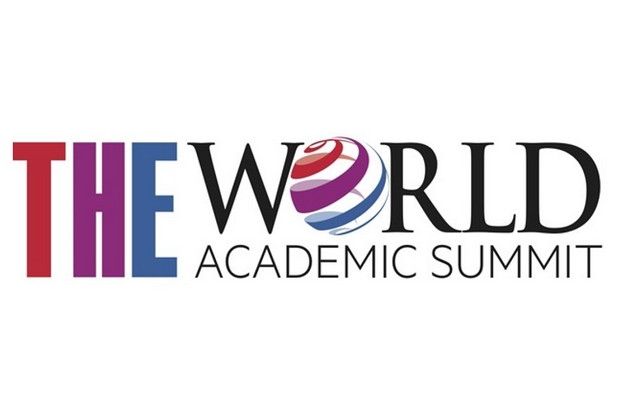Bertil Andersson, president of one of the fastest-rising universities in the world, outlines the new trends in university development to be addressed at the Times Higher Education World Academic Summit 2013 in Singapore
The modern university is a vibrant and important part of society - providing highly skilled and educated manpower and a source of discovery and innovation.
Usually funded by the public sector, they are seen by society and governments primarily as national institutions, but now there is a new trend in internationalisation. Students are more mobile and a global market-place is developing for higher education, while research is already substantially international in character. In the grand challenges facing today’s society - such as new demographics and healthcare, environment and climate change - universities are now at the forefront of global research. Collaborative research is the name of the game with more than two-thirds of all research papers having authors from different institutions and over one-third of all papers having authors from more than one country.
There is also another phenomenon at work in terms of internationalisation, with new academic partnerships becoming the “order of the day” based on mutual academic esteem. One aspect of this trend is the physical presence of institutions from one country to another. Singapore is a prime example of this trend which, with Government support, has brought institutions such as the Massachusetts Institute of Technology, ETH Zurich and the University of Cambridge to the country in close partnership with local universities. Two of the most significant examples are the Technical University of Munich’s work with Nanyang Technological University (NTU) and BMW and the new medical school at NTU which is a joint operation between ourselves and Imperial College London.
Universities have generally shown themselves to be capable of rapid change to meet these new challenges. The expectation that universities will also be delivering economic benefits to society has been accompanied by an increasing involvement of commerce and industry in both research and teaching. Many of the world’s major multi-national companies, themselves examples of the “global village”, are now working in close partnership with universities.
I have always believed in the Humboldtian ethos of a university combining the intimate relation of teaching and research and now we can add a third component which is that of the provision of societal benefit. What better way to do this than in close cooperation with the private sector?
Major global industry is attracted to regions where one finds the best universities because they provide the talent pool at all levels from first degree holders to post-doctoral fellows. In addition, industry wants to be able to work closely with universities in the development of discovery and innovation. In so doing, commerce and industry are a valuable source of research funding as well as the provider of much expertise to these research partnerships.
Such industry-university partnerships are also recognition of a trend towards greater “utilitarian” research for the national benefit. Can this be reconciled with the academic need to have open publications and citations? Here at NTU, we believe that this can be achieved by working on forefront technological problems.
The latest measurement of this relationship is the Times Higher Education World Academic Summit Innovation Index, compiled with Thomson-Reuters (which was published as a precursor to the forthcoming THE World Academic Summit 2013 to be held at the NTU in Singapore on 2-4 October 2013). Examining the income from industry that institutions attract per university researcher, the Index is dominated by the Asian countries, which make up half of the world’s top ten. Singapore comes in second place just behind South Korea. This reflects both the rise of Asian universities and their increasing attractiveness for investment by global companies. For Singapore, it is further evidence of the success of the far-sighted Government policy to move rapidly towards the “knowledge-based” economy, especially through its very substantial investment in its universities. From a slow start more than a decade ago, Singapore is now clearly in the top echelon of “research countries”.
Here at NTU, which although becoming more comprehensive is still primarily an engineering-based university (two-thirds of the faculty belong to the College of Engineering), we have been particularly active in developing our relationship with major technological-based multi-national companies. Examples are of these close collaborations with such established “giants” as Rolls-Royce, BMW, Lockheed-Martin and many others as well as new companies. We believe that one can create symbiotic relationships in which everyone concerned is a “winner”. For the university, it provides not only an additional source of income but also access to special facilities and, more importantly, the ability to address important problems which require solution. For the companies, the relationship provides access to the latest thinking by working with faculty and also to the new talent emerging from the latest research projects. For students involved in such activities, it provides exposure to industry and, hopefully, a privileged entry into the world of work. Thus everyone ends up a winner. At NTU, we have the ability to provide on-campus laboratory facilities for companies and we encourage the joint supervision of research students by university professors and their industrial colleagues.
Finally, the outcome of research can often be more quickly taken to the innovation stage for the benefit of the local economy through the exploitation of the research by the company.
Of course, such agreements have to be carefully designed on the basis of mutual respect and the sharing of intellectual property and both sides have to do their due diligence but, overall, everyone benefits. Certainly, we are proud of our ability to attract and work with world-leading companies at NTU.
Having said this, it is important that a university such as NTU has the resources and ability to support and develop more basic blue skies research. At NTU we believe that we have struck a good balance, combining the more applied industrial programmes with bottom-up basic research leading to open publications in the scientific literature. Our success here is measured by an increase in citations of publications in high-level journals.
These new trends in university development and their management are the themes which we shall be discussing at the forthcoming THE World Academic Summit which are we co-organising with Times Higher Education and hosting at NTU.
Bertil Andersson is president of Nanyang Technological University
Register to continue
Why register?
- Registration is free and only takes a moment
- Once registered, you can read 3 articles a month
- Sign up for our newsletter
Subscribe
Or subscribe for unlimited access to:
- Unlimited access to news, views, insights & reviews
- Digital editions
- Digital access to THE’s university and college rankings analysis
Already registered or a current subscriber? Login




